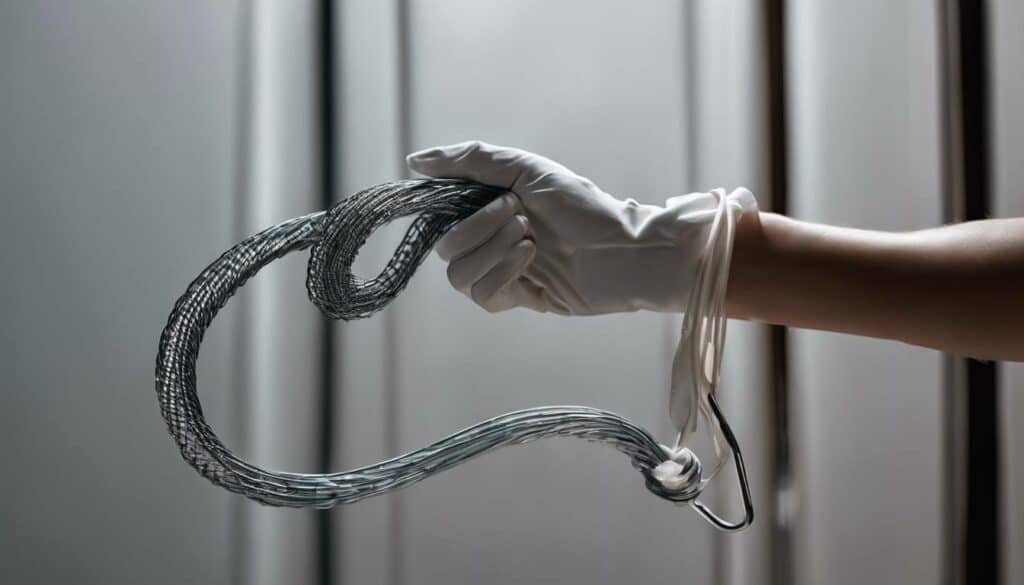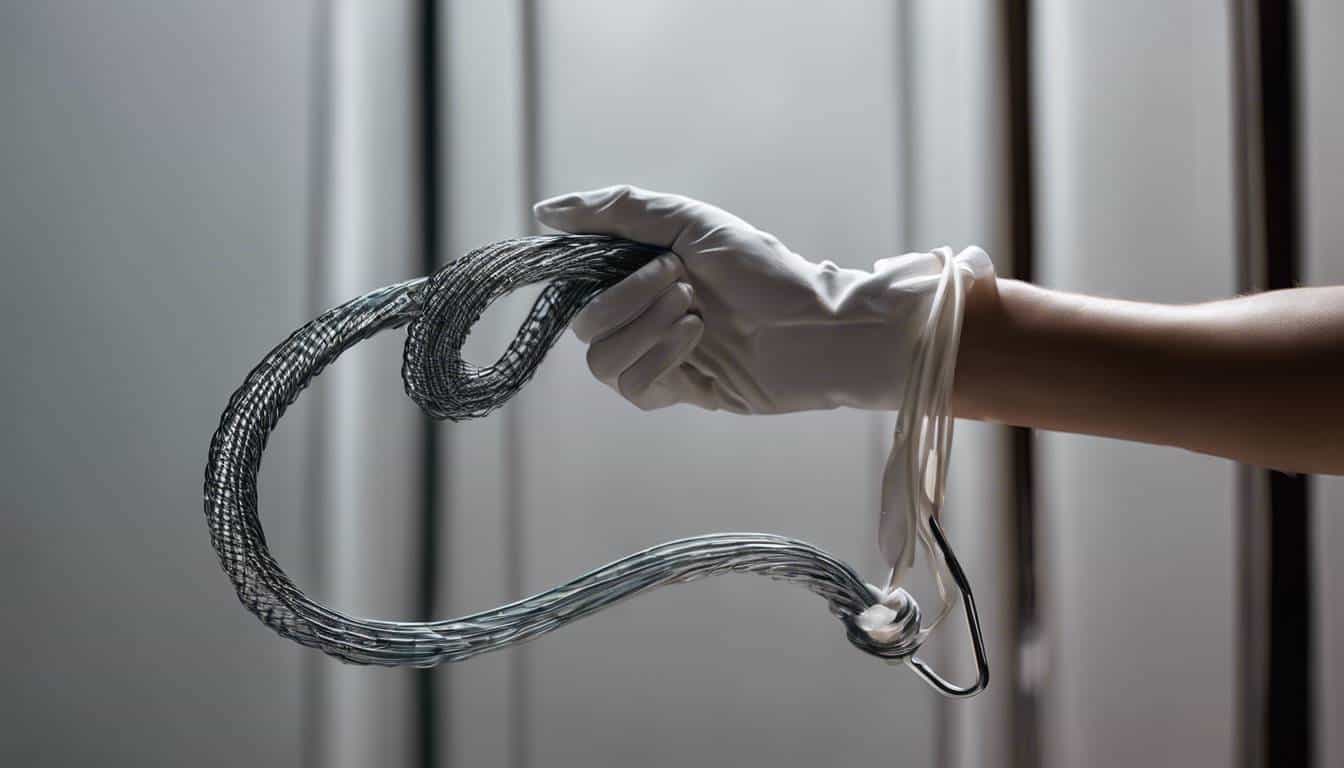Picture this: a memorable moment etched in time, one that could’ve turned embarrassing if not for being at home. After using the toilet, a glance down revealed water rising in the bowl, prompting a sinking feeling of ‘oh no.’ I knew I had a plunger, but, over the years, the rubber cracked meaning it produced no suction. I refused to call a plumber and couldn’t leave the house with my girlfriend there, so I had to find solutions on my own which I am sharing in this article.
Unclogging a toilet without a plunger is more straightforward than most people think. Essential household items, like dish soap and hot water, can often do the trick. The soap helps to grease the clog while the hot water works to break it down, providing a quick and simple solution to your predicament. It’s almost as if your bathroom turns into an impromptu science lab. Now, let’s immerse ourselves into this home experiment.
One effective method for unclogging a toilet without a plunger is to pour a generous amount of shampoo or dish soap directly into the toilet, followed by carefully pouring hot water from the sink or bath into the bowl. Allow the mixture to sit for 5-20 minutes before flushing, and consider owning a plunger as a backup solution for future incidents.
Household Items as Quick Fixes
When a clogged toilet catches you off guard, it’s good to know that you can tackle the situation with everyday household items. These DIY remedies are simple yet effective and are often readily available in most homes. Let’s look at two common options: hot water with dish soap and the classic combination of baking soda and vinegar. These methods can be as effective as professional cleaning solutions for many common household issues.
Hot Water and Dish Soap
Using household staples can be a game-changer when you find yourself without a plunger on hand. Begin by pouring a generous amount of liquid dish soap or shampoo directly into the toilet bowl. The grease-cutting properties found in dish soap can help dissolve solids causing blockages. Next, carefully pour hot water into the toilet bowl to aid in breaking down the clog.
It’s important to note that the water should be hot, but not boiling, as boiling water may crack the porcelain. This method is particularly effective for organic clogs or toilet paper blockages.
Baking Soda and Vinegar
Another tried-and-true method involves creating a foaming reaction using a mixture of baking soda and vinegar. Begin by pouring about one cup of baking soda into the toilet bowl. Then, pour vinegar slowly into the bowl. As the two substances react, they produce effervescence which can help dislodge minor clogs and clear the drain. This method is not only effective for toilets but can also be used for other household drains.
Imagine this process as akin to a science experiment in your bathroom – the chemical reaction between the baking soda and vinegar produces bubbles that can help break down any organic matter causing the clog.
By utilizing these readily available household items, you can effectively address a clogged toilet without the immediate need for a plunger, giving you peace of mind during an inconvenient situation.
Navigating unexpected inconveniences like clogged toilets often calls for quick thinking and resourcefulness. Now, let’s explore how natural solvents can serve as powerful allies in fighting stubborn clogs.
Utilizing Natural Solvents for Clogs
When it comes to nature’s solutions for stubborn clogs, there are a few standouts. Let’s take a closer look at two effective and environmentally friendly options that work wonders in clearing toilet clogs.
DIY Drain Cleaner
If you’re looking for an eco-friendly way to clear your toilet drain, try utilizing a combination of baking soda and salt followed by hot water. The fizzing action created by the baking soda and salt helps break down organic material causing the clog, making these natural ingredients a powerful yet gentle solution.
The alkaline nature of baking soda (sodium bicarbonate) and the abrasive action of salt combine to form a potent cleaning duo. When these two common household ingredients come into contact with water, they create a fizzy chemical reaction that works to dissolve and dislodge organic matter from within the pipes. This makes the DIY drain cleaner an effective natural solvent for mild to moderate clogs.
Enzymatic Cleaner
Another environmentally friendly option for unclogging your toilet is an enzymatic cleaner. Enzyme-based cleaners utilize natural bacteria and enzymes to eat away at organic matter clogging the pipes. These cleaners are specifically designed to target and break down organic waste without causing damage to your plumbing system.
Enzymatic cleaners operate on a simple principle: the introduction of beneficial bacteria and enzymes into your plumbing system. Once introduced, these microscopic allies get to work consuming and breaking down the organic matter present in clogs, effectively clearing the blockage without the need for harsh chemicals.
You can think of enzymatic cleaners as dedicated workers specifically tailored to cleaning your plumbing. They address the root cause of toilet clogs by eating away at the organic material, leaving behind a cleaner and clearer drain without harming your pipes or negatively impacting the environment.
Incorporating these natural solvents into your clog-clearing arsenal helps keep things flowing smoothly whilst minimizing your environmental impact by steering clear of harsh chemical cleaners.
Mastering these natural solvents equips you with powerful tools for managing common bathroom mishaps. Now, we move our attention to more comprehensive methods that ensure your entire plumbing system stays in top-notch condition.
Step-by-Step Pipe and Drain Cleaning
When faced with a clogged toilet and lacking a plunger, it often requires creative and resourceful solutions. One alternative method involves using a large plastic bottle filled with warm water to create a seal and dislodge the clog. This technique can also help remove stubborn stains. Here’s how you can do it:
Creating a Seal with Warm Water
As a makeshift solution, a large plastic bottle filled with warm water can act as your substitute for a traditional plunger. Here’s how you can use this method effectively:
- Fill a large plastic bottle with warm water, ensuring that it’s enough to create sufficient pressure when inverted.
- Position the mouth of the bottle over the drain opening or the top of the toilet bowl.
- Quickly flip the bottle upside down and press it down firmly over the drain or bowl opening to create a seal.
- Apply consistent and steady pressure to force the water down the pipes, which can help dislodge the clog.
This technique is effective because the force of the displaced water can help break up and push through blockages in the drain.
Utilizing a Toilet Auger or Plumbing Snake
If you’re faced with a particularly stubborn clog, another alternative is to use a toilet auger, also known as a plumbing snake. This tool is specifically designed to navigate through the curves of the toilet drain and reach blockages that are deeper within the pipes.
Here’s how you can use a toilet auger effectively:
- Insert the end of the toilet auger into the drain opening while being mindful to avoid scratching the porcelain surface.
- Crank the handle of the auger clockwise, allowing the coil at its end to maneuver through and break up obstructions within the pipes.
- Once you’ve fed enough of the auger into the drain, start cranking it in reverse while carefully withdrawing it from the pipe. This motion helps to retrieve any dislodged debris along with wire coil.
Keep in mind that practicing caution when using this tool is crucial to prevent any mishaps or damage to your toilet.
By employing these alternative methods such as using warm water sealed inside a plastic bottle or utilizing a toilet auger, you’re equipped with effective strategies for addressing toilet clogs without relying on a traditional plunger. These methods provide practical solutions for addressing various levels of clogging severity, ensuring that your plumbing stays clear and functional.
Armed with these alternative techniques, let’s pivot our attention towards exploring chemical solutions for dealing with more obstinate obstructions in your plumbing system.
Chemical Solutions for Stubborn Obstructions
When faced with a clogged toilet or sink, it’s common to seek quick fixes using chemical drain cleaners. An alternative to traditional drain cleaners is to consider using biological drain cleaners containing bacteria and enzymes along with other natural ingredients that feed on organic waste to clear the clog without using harsh chemicals.
Biological drain cleaners offer an environmentally-friendly solution, as they don’t contain the aggressive chemicals commonly found in conventional drain cleaners. These cleaners work by introducing beneficial bacteria into the clogged area, which then produce enzymes that break down organic matter such as food, grease, and hair. It’s important to follow the instructions on these products carefully and give them adequate time to work effectively. Additionally, be aware that biological drain cleaners may not be effective for all types of obstructions, particularly those caused by inorganic materials.
It’s crucial to exercise caution when resorting to traditional drain cleaners as a last resort for stubborn obstructions. These chemicals are formulated with strong corrosive substances intended to dissolve stubborn clogs. However, their acidic or alkaline composition can potentially have detrimental effects on plumbing systems and pose environmental hazards if not used responsibly.
Many conventional drain cleaners contain hydrochloric acid (muriatic acid), sulfuric acid, or sodium hydroxide (lye), which can erode pipes and harm the environment if improperly handled or overused. Furthermore, these chemicals can release fumes that are harmful to breathe in and may cause damage upon contact with skin or eyes.
Non-Corrosive Options
When considering chemical solutions for unclogging drains, prioritize non-corrosive options that won’t damage your plumbing system or harm the environment. Look for products containing citric acid or lower concentrations of acetic acid (vinegar) which are less abrasive and provide a safer alternative for addressing slow drains or blockages.
Prioritizing biological drain cleaners featuring beneficial bacteria and enzymes can offer an eco-friendly solution while promoting the prolonged health of your plumbing system. While traditional chemical drain cleaners should be reserved as a last resort due to their potential corrosive effects, opting for non-corrosive alternatives is crucial in ensuring responsible maintenance and environmentally conscious decisions when dealing with stubborn obstructions.
With various methods in mind, let’s now move on to explore effective practices for preventing messy situations while unclogging toilets and sinks.
Avoiding the Mess While Unclogging
Unclogging a toilet can be a messy business, but there are ways to minimize the mess and make the process more manageable. These techniques can also be applied to cleaning other bathroom fixtures, such as bathtubs.
Protective Gear
When dealing with a clogged toilet, it’s a good idea to consider using rubber gloves and protective eyewear. These will help ensure your safety and hygiene during the unclogging process. You want to protect your hands and eyes from any splashes or spills that might happen.
Prepare the Area
Before attempting any DIY unclogging methods, it’s essential to prepare the area to minimize possible mess and make cleanup easier in case of spills or splashes. One way to do this is by laying down old towels or newspapers around the toilet. These will help soak up any water that spills over and make cleaning up afterwards much simpler.
Taking these simple precautions can make a big difference in how easy and stress-free the unclogging process is. No one wants to deal with a mess when trying to fix a problem, especially when it involves a clogged toilet!
Now that we’ve covered protective gear and preparing the area, let’s discuss some unclogging techniques that don’t involve using a plunger.
Tips to Prevent Future Toilet Clogs
Let’s face it; no one enjoys dealing with toilet clogs. The good news is that by taking a few simple steps and instilling good habits, you can significantly reduce the chances of facing this inconvenience again. Here are some practical measures to prevent future toilet clogs:
Educating Users
It’s essential to communicate the correct practices to all household members. True, it may seem like common sense, but reminding everyone in the household about what not to flush down the toilet can go a long way. Sanitary products, wipes, and other non-biodegradables should always be disposed of properly in a waste bin. It’s also crucial to educate children about keeping toys out of the bathroom to prevent accidental flushing.
Moreover, a gentle reminder about using an appropriate amount of toilet paper is beneficial. According to experts, the ideal amount is around six sheets per use. This small yet influential change in behavior can make a notable difference in preventing future blockages.
Another significant point is the impact of toilet paper types on potential clogging issues. Opting for single-ply toilet papers over thicker alternatives can greatly reduce the likelihood of toilet blockages, as they disintegrate more easily when flushed. This simple switch not only benefits your plumbing system but can also be an environmentally friendly choice.
Regular Maintenance
In addition to educating users, regular maintenance plays a crucial role in preventing future toilet clogs. Using a natural enzymatic cleaner on a regular basis can help maintain clean and free-flowing drains, reducing the accumulation of organic matter and sediment within the pipes.
Enzymatic cleaners are designed to break down organic materials such as hair, soap scum, and food particles that may accumulate within plumbing systems. These cleaners are mild and eco-friendly, making them safe for regular use without worrying about damaging your plumbing. They can even be used to clean shower tiles without scrubbing, making them versatile cleaning agents for various bathroom surfaces systems. These cleaners are mild and eco-friendly, making them safe for regular use without worrying about damaging your plumbing.
By incorporating this proactive measure into your regular cleaning routine, you’re taking a preventive approach to maintaining smooth drain flow. Ultimately, the goal is to minimize the chances of encountering unexpected blockages and the hassle that comes with them.
While preventative measures won’t guarantee complete immunity from future clogs, they can certainly go a long way in reducing the likelihood of encountering plumbing issues in your home.
Preventing toilet clogs is not just about avoiding inconveniences; it’s about fostering healthy habits and maintaining efficient plumbing systems that benefit everyone in your household.






